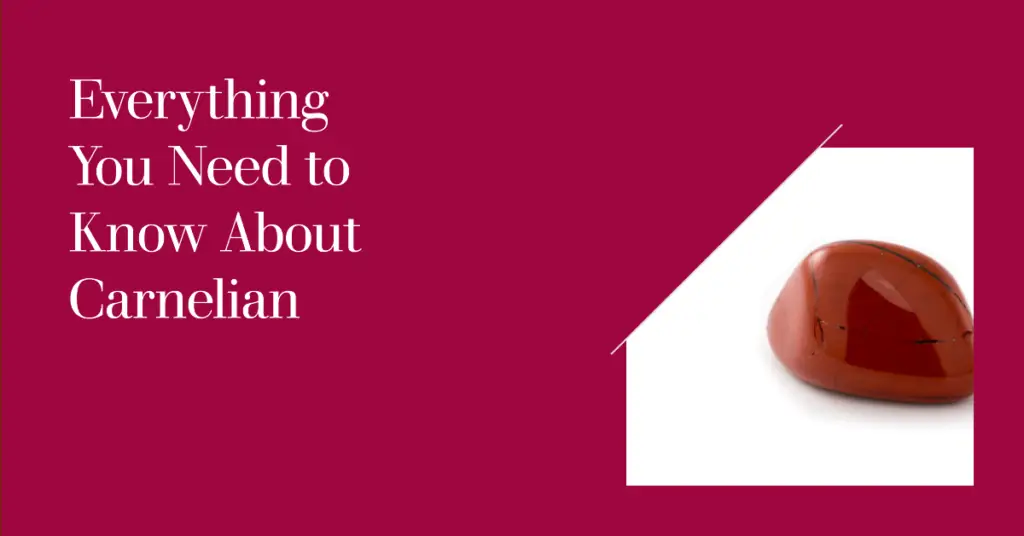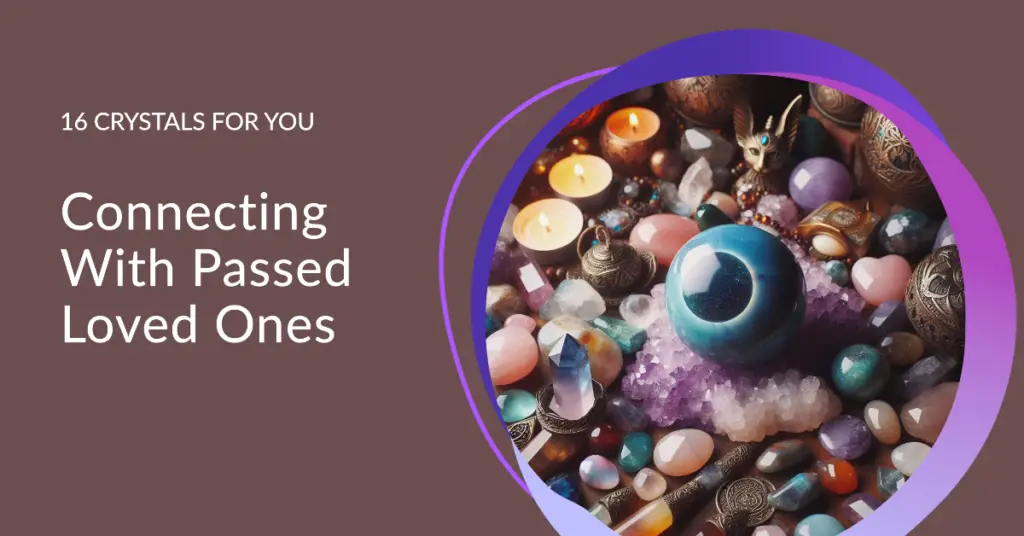Carnelian is the beautiful orange-red variety of chalcedony, a cryptocrystalline form of quartz. With its warm, vibrant color, carnelian has been prized since ancient times and remains popular today in jewelry and decorative items.
Read on to learn all about carnelian, including its properties and symbolism, as well as tips for caring for this stunning gemstone.
What is Carnelian?
Cornelian refers to the microcrystalline quartz aggregates that make up the gemstone. The orange-red color of carnelian comes from trace amounts of iron impurities.
This semi-precious stone forms when a silica-rich solution seeps into the crystal holes and cracks of sedimentary rock. As the silica crystallizes into quartz, the iron impurities in it color the carnelian a signature fiery red.
Carnelian ranges in color from light orange to dark reddish brown. The most valuable carnelian has a bright, clear color. Stones with a brownish hue are sometimes referred to as “carnelian,” while carnelian with white streaks or patches is known as “carnelian.”
In addition to its color, carnelian has a glassy luster and transparency, and high-quality carnelian is free of veins, spots and cracks. With a hardness of 7 on the Mohs scale, Carnelian is suitable for rings and other jewelry.
Where Does Carnelian Come From?
Historically, India was a major producer of carnelian. Large deposits have been found in Gujarat and other parts of the west coast. For many centuries, Indian carnelian was traded as far as Rome and Egypt.
Today, Brazil is the leading producer of carnelian. Other sources include India, Uruguay, Germany, Siberia, and the United States. Oregon produces carnelian, as well as agate and jasper, which are secondary deposits from volcanic flows.
Carnelian has also been found in Australia, Iceland, England, Saudi Arabia, Egypt and South Africa. Wherever it is found, carnelian is mined from secondary deposits of volcanic or sedimentary rock.
How does carnelian formed?
Carnelian is formed through a combination of geological processes that occur over time. Carnelian is formed when a silica-rich solution penetrates porous rock and gradually deposits layers of chalcedony. Carnelian is composed primarily of silicon dioxide (SiO2) with traces of iron oxide (Fe2O3) and has a characteristic red to orange color.
Here are some key points on how carnelian is formed:
- Formation process: Carnelian is formed through a process known as diagenesis, which involves the transformation of sediment into sedimentary rock. A silica-rich solution penetrates the porous rock and gradually deposits layers of chalcedony, resulting in the formation of carnelian.
- Geologic Setting: Carnelian is formed in a variety of geologic settings, often in secondary deposits. It usually occurs in sedimentary rocks such as flint, agate and flint nodules.
- Mineralogy and composition: Carnelian is a type of chalcedony, itself a type of microcrystalline quartz. It is composed primarily of silicon dioxide (SiO2) with traces of iron oxide (Fe2O3) and exhibits a characteristic red to orange color.
- Crystal system: Carnelian is a tripartite crystal system. However, it rarely occurs in different crystal forms, as it usually forms massive or granular aggregates.
Carnelian Meaning and Symbolism
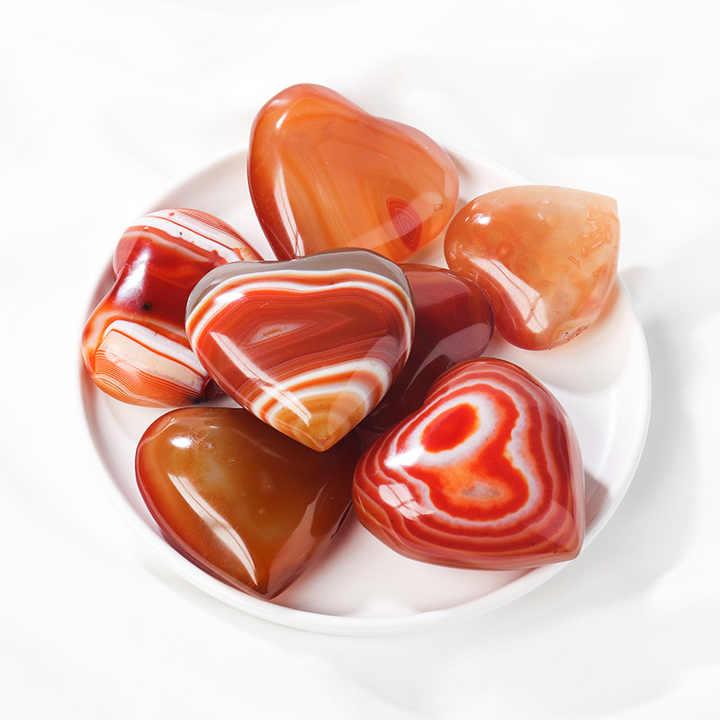
With its warm and vibrant color, it’s no wonder that carnelian has been historically associated with inspiring passion and vitality. Here are some of the meanings and powers given to this gemstone:
- Motivation and creativity: Carnelian’s vibrant orange color is associated with drive and creativity. This gemstone has renewing properties that can help you pursue your goals and talents.
- Passion and sexuality: In the crystal healing tradition, Carnelian is known for inspiring passion, intimacy and sexual desire. It contains a powerful yang energy that ignites desire and attraction.
- Confidence and courage: Carnelian instills courage and self-confidence to speak and act. Warriors would carry carnelian with them as a sign of bravery and quick thinking.
- Concentration and Memory: This stimulating stone improves concentration and mental focus when you need to perform at your peak. It is also said to improve memory.
- Protection and healing: Historically, Carnelian was considered a talisman to ward off evil, harm and spells. It was also believed to speed up the healing of wounds.
- Abundance and success: From the ancient Egyptians to medieval aristocrats, carnelian has been associated with wealth, prosperity and success for thousands of years.
Carnelian Uses and Benefits
Carnelian has a long history and mystical powers, how is it being used today? Here are some of the best ways to utilize carnelian:
Jewelry
Carnelian has been a favorite jewelry stone from ancient Egyptian times to the present day. With its beautiful color, durability, and affordability, carnelian is an ideal material for jewelry making:
- Rings: From everyday wear to formal occasions, the Carnelian ring is a classic. Carnelian is hard enough for everyday wear and polished to a brilliant shine.
- Necklaces: Carnelian pendants or beaded necklaces can add a splash of color to any outfit. The bright hue of carnelian can be a great accent.
- Bracelets and earrings: Layer carnelian bracelets for a bohemian look or opt for studs for a coordinated look. The versatility of carnelian brings endless options.
Amulets and talismans
Because of its long history as an amulet, carnelian has been carved into pendants and beads for good luck. It is also the perfect gemstone for making amulets:
- Success in business or creative work
- Passion and intimacy in relationships
- Renewed impetus and dynamism
- Courage and confidence
Meditation
Placing Carnelian in the meditation space or holding it in your hand while meditating improves concentration and stimulates inner vitality. Carnelian increases awareness and mental focus, bringing about an awakened life force.
Feng Shui
In Feng Shui, Carnelian can be placed in the south, southeast and east of a home or room. Carnelian energizes these areas associated with passion, reputation and motivation. The orange gemstone also promotes family and social relationships.
Crystal healing
Crystal therapists place Carnelian on the sacral chakra to enhance sexuality, creativity and pleasure. Placing Carnelian on the solar plexus is believed to enhance motivation, self-confidence and personal empowerment.
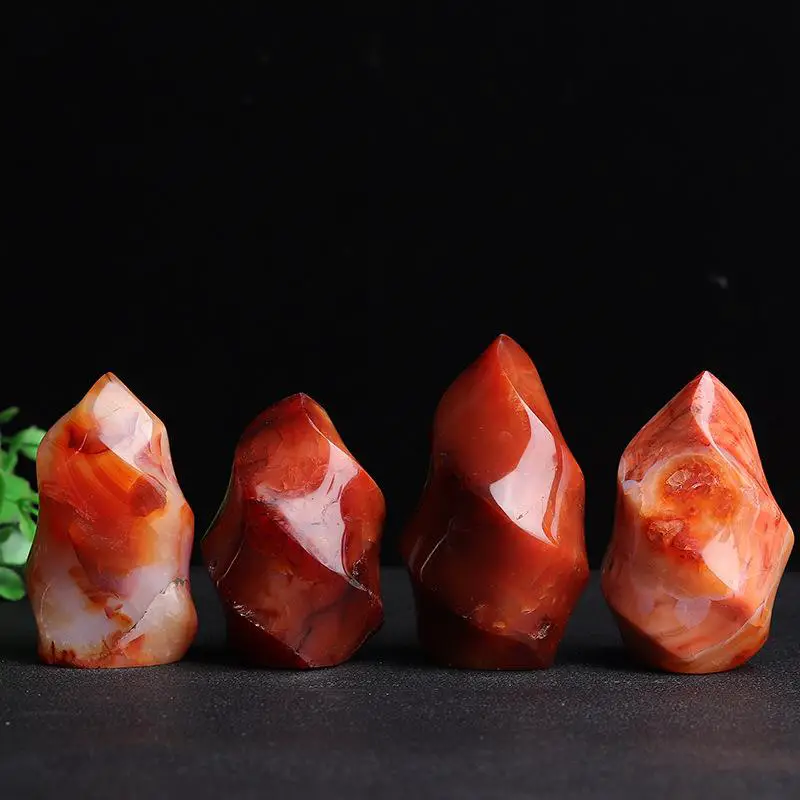
Crafts
With its smooth polish and vibrant colors, carnelian is ideal for decorative crafts. Try making candlesticks, vases, coasters and more from the polished stone for an artistic touch.
How to Care for Carnelian
As a durable gemstone, carnelian requires minimal maintenance. However, following a few care tips can keep your carnelian looking its best:
- Clean your carnelian jewelry regularly with warm soapy water and a soft bristle brush. Rinse and pat dry. Avoid harsh household chemicals and ultrasonic cleaners as they can damage the stones.
- Store carnelian separately from other gemstones to prevent scratches. Wrap it in a soft cloth bag or place it in a designated box.
- Avoid exposing carnelian to high temperatures and temperature fluctuations. Rapid heating and cooling can cause fracture.
- When wearing a carnelian ring or bracelet, remove it before physical activities such as sports, gardening or cleaning to prevent scratches.
- Carnelian jewelry is professionally cleaned every 6-12 months to keep the color vibrant. Ultrasonic cleaning and repolishing services are available at your local jeweler if needed.
How to Spot Fake Carnelian
Natural carnelian has a purity and luster that is hard to imitate. But beware of these common treatments and fakes:
- Dyeing: Lighter stones can be tinted to enhance the orange color. Please look carefully for an unnaturally bright, even hue.
- Heat treatment: Some carnelians have been heated to improve clarity and color. Watch for light spider web markings or overly reddish tones.
- Glass or resin: Completely man-made “carnelian” is sometimes made from molded glass or colored resin. This material lacks the natural grain and has a plastic-like artificial luster.
- Reconstituted stone: Chips of carnelian or chalcedony are sometimes fused with dyes and resins to form a reclaimed stone. Exhibits unnatural colors and streaks.
If in doubt about an item, have the carnelian appraised by a gemologist to determine if the stone has been treated in any way and to authenticate it. Natural, unenhanced carnelian is always the highest value.
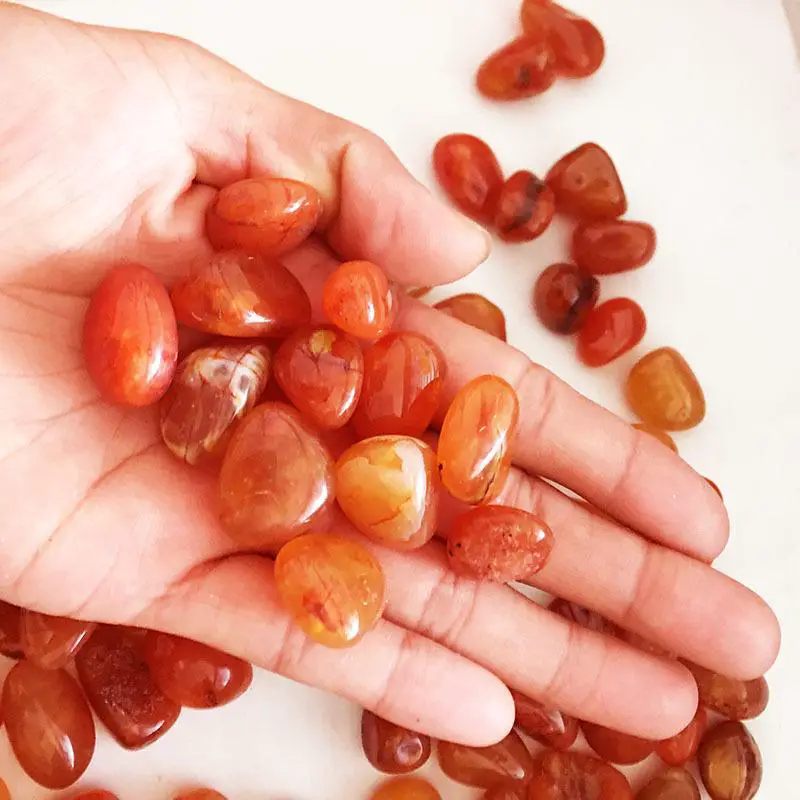
Carnelian vs. Similar Gemstones
For the inexperienced, carnelian can be confused with other red and orange stones. Here’s how to tell them apart:
- Sade: Historically, “Sade” referred to carnelian with a brownish-red hue, but today it is used interchangeably with carnelian. The two names refer to the same gemstone.
- Sardonyx: This banded gemstone consists of red agate with white onyx stripes. The white onyx stripes distinguish it from uniform carnelian.
- Coral: Unlike the translucent carnelian, coral is a completely opaque organic gemstone. Under magnification, coral shows a unique porous structure.
- Garnet: Red garnet also resembles carnelian, but garnet lacks the subtle orange undertones of carnelian. Garnet is also brighter and crisper, while carnelian has a glowing warmth.
- Jasper: Jasper is an opaque, microcrystalline quartz that is similar to carnelian, but lacks the translucency of carnelian. Jasper also favors a muddy greenish-brown color over the fiery reddish-orange of carnelian.
Are There Varieties of Carnelian?
Carnelian comes in a variety of colors and patterns, ranging from deep red to reddish brown in color::
- Orange Carnelian: This carnelian is bright orange in color and is the most common type.
- Yellow Carnelian: This carnelian is yellow in color and some people confuse it with citrine or yellow calcite.
- Pink Chalcedony: This carnelian is pink in color and is commonly used in jewelry.
- Banded Carnelian: This type of carnelian has bands of different colors, such as red and white.
- Red agate: This type of agate consists of red and white banded lines and is synonymous with red agate.
- Carnelian Agate: This carnelian is banded and can be categorized into carnelian and agate.
Final thoughts on carnelian
With its warm glow and rich history, it’s easy to see why carnelian has been prized in different cultures for thousands of years. This orange chalcedony combines beauty, durability, mystical powers and affordability.
From ancient Egyptian amulets to modern crystal healing, carnelian remains as popular today as it was centuries ago. Let this vibrant gemstone enhance your energy and passion.
About the Author
I was introduced to the power of crystals by chance during a trip overseas ten years ago, and began to learn about crystals and meditation. After years of experiencing firsthand the beauty and benefits of crystals, I founded CrystalWith to share my knowledge with others.

